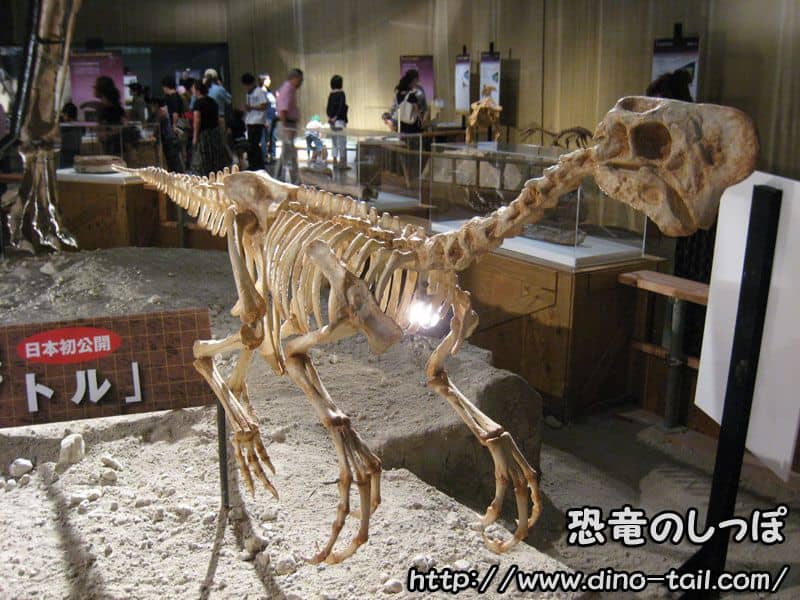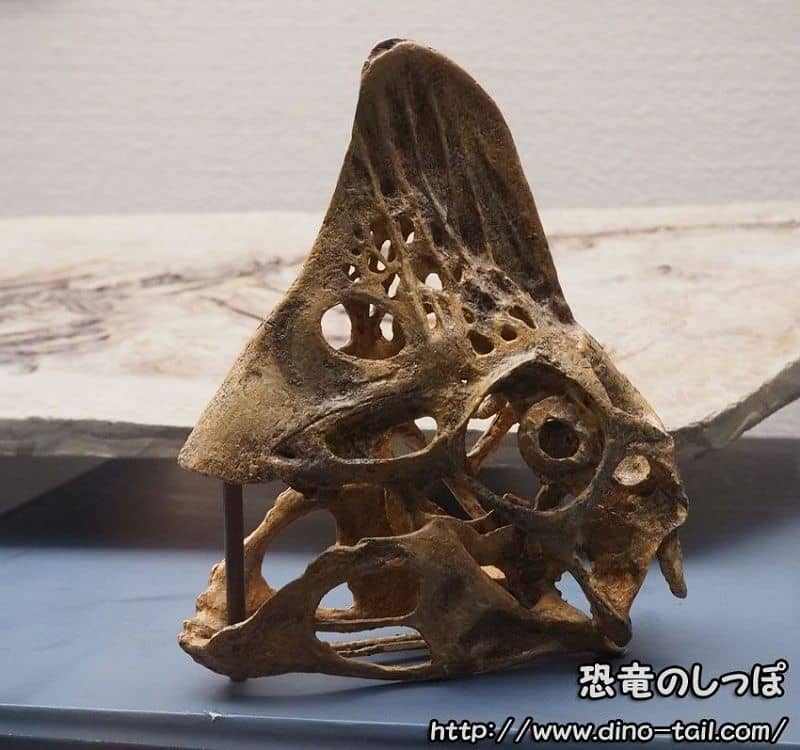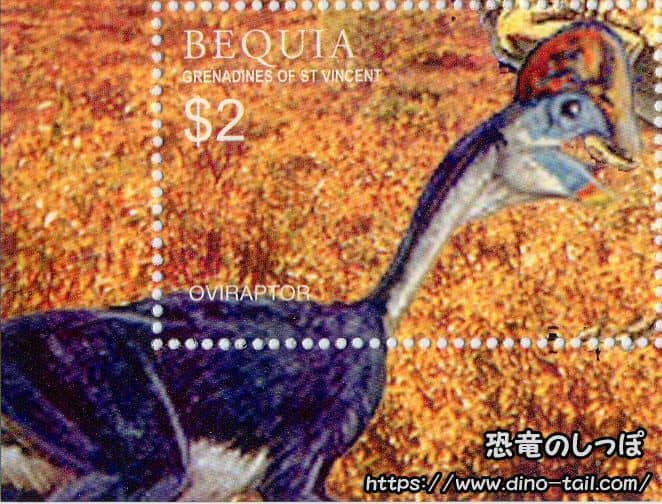About Oviraptor
| Scientific Name (Genus) | Oviraptor |
| Meaning of Name |
Egg thief
ovi (egg) [Latin] - raptor (thief) [Latin] |
| Classification | Saurischia, Theropoda (Tetanurae) |
| Total Length | Approx. 2m |
| Diet | Omnivorous |
| Period | Late Cretaceous (approx. 75 million years ago) |
| Species |
Oviraptor philoceratops
*The species name philoceratops means 'lover of ceratopsians (Protoceratops).' |
| Year of Paper Publication | 1924 |
| Genus Name Publication |
Three new Theropoda, Protoceratops zone, central Mongolia.
American Museum Novitates, 144. by Henry Fairfield Osborn. 1924. |
Features
The main feature of oviraptorids is their powerful, toothless beak. In particular, a bony projection in the center of the upper jaw, which occluded with the lower jaw, was well-suited for crushing hard objects.
The prevailing theory about the use of this beak is that it was used to crack open hard-shelled mollusks (such as bivalves) or nuts. Although the 'egg thief' accusation was false, the possibility that they preyed on the eggs of other dinosaurs is still debated.
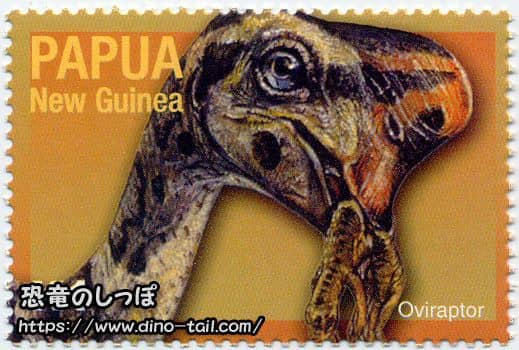
Reconstructions often depict it with feathers. Fossils have also been found of individuals incubating eggs with their forelimbs.
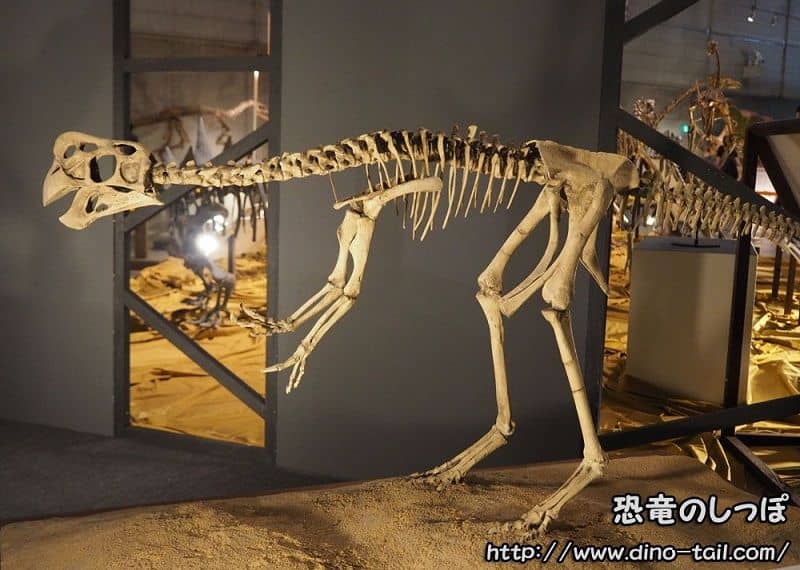
A Tarnished Name
There is a major misunderstanding behind the genus name Oviraptor, which means 'egg thief.'
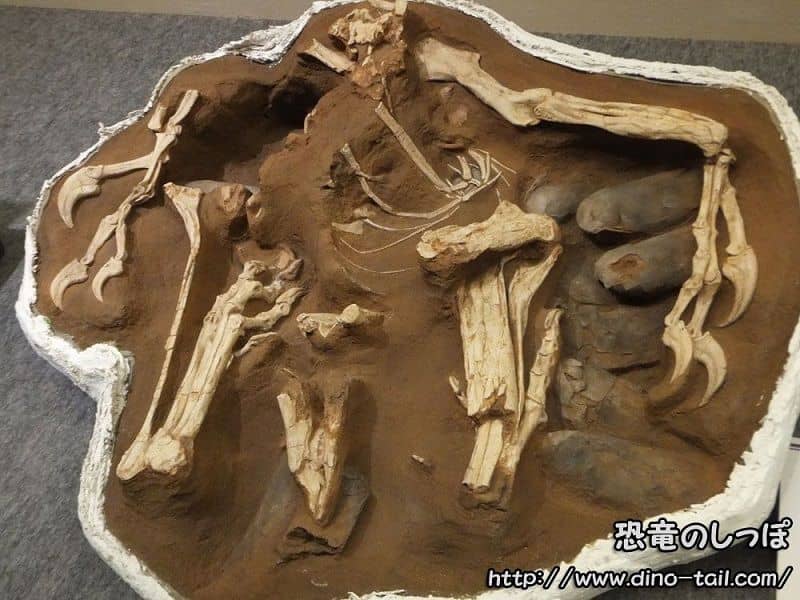
In the 1920s, during an expedition to Mongolia by the American Museum of Natural History, a new species of theropod, about 2 meters long, was discovered. The misunderstanding arose because it was found together with a nest of Protoceratops and its eggs. The new theropod, excavated near the Protoceratops nest, was thought to be preying on the Protoceratops eggs, and in 1924 it was named Oviraptor, meaning 'egg thief.'
However, in 1993, it was discovered that the eggs, previously thought to belong to Protoceratops, actually contained Oviraptor's own young.
Oviraptor was not preying on the eggs of others but was incubating them, and it is believed that the fossil is of an individual that was fossilized along with its nest while incubating.
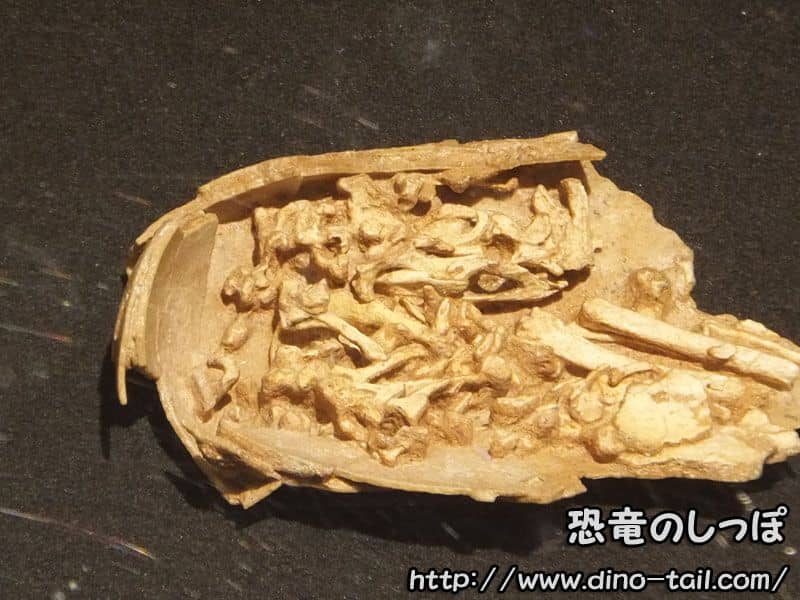
In 1993, it was discovered that the embryo in the egg, previously thought to be of Protoceratops, was actually an Oviraptor baby.
A historic specimen that revealed it was not an egg thief.
Furthermore, in 1995, a dinosaur closely related to Oviraptor, Citipati, was found in a brooding position with its forelimbs spread out.
For about 60 years, Oviraptor was thought to be an egg thief. In fact, it was just incubating its own eggs. The 'egg thief' in its genus name was a false accusation.
The species name, philoceratops, meaning 'lover of ceratopsians,' was given because it was thought to favor the eggs of Protoceratops, a name that is now ironic.
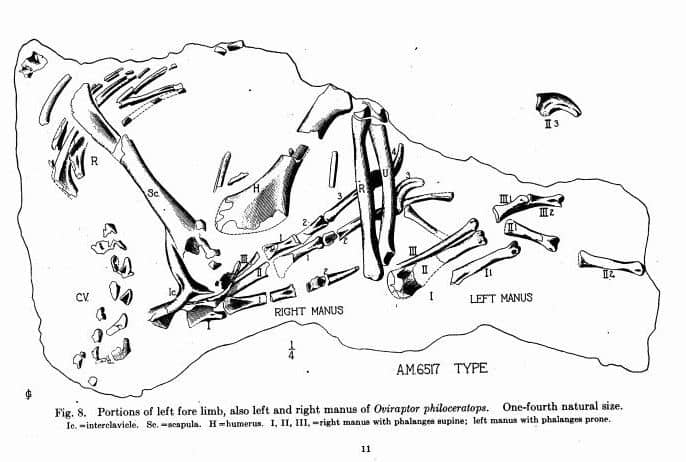
Source: Three new Theropoda, Protoceratops zone, central Mongolia.
American Museum Novitates, 144.
by Henry Fairfield Osborn. 1924.
The 'True Identity' of Oviraptor: A Century of Misidentification
Although Oviraptor's name has been cleared of the 'egg thief' accusation, there is more to the story. The famous image we often see in encyclopedias and museums, of a creature with a prominent crest brooding over eggs, is, strictly speaking, not Oviraptor.

The one and only specimen (the holotype) that was first named 'Oviraptor' has a crushed skull and is not well-preserved. And it is highly likely that this skull did not have a prominent crest .
On the other hand, the numerous beautiful, well-preserved fossils found in a brooding position were later found to have different features from Oviraptor and were given the separate genus name Citipati . In other words, the image we know of the 'good mother incubating her eggs' is mostly that of the closely related Citipati.
For this reason, most reconstructions and skeletal photos labeled 'Oviraptor' in encyclopedias are scientifically depicting 'Citipati.' The true appearance of the real Oviraptor is still largely shrouded in mystery.
Oviraptor Stamp & Fossil Gallery
